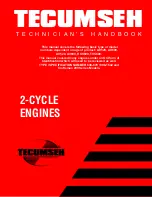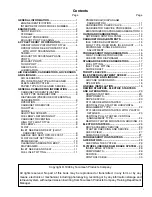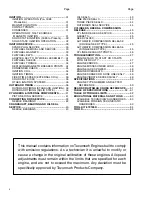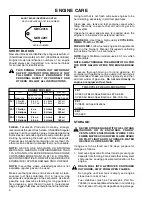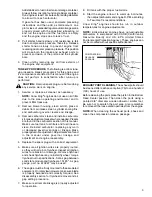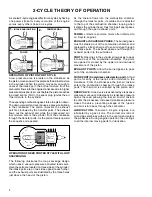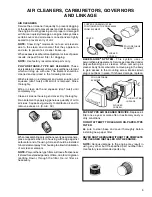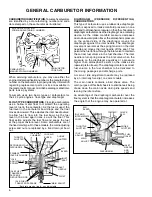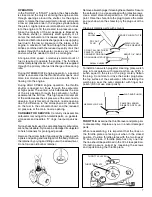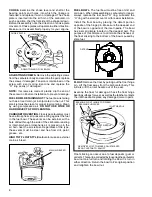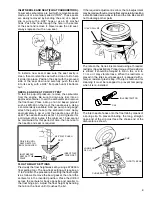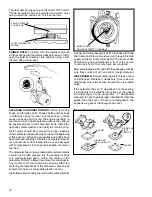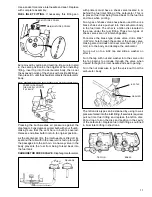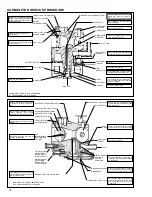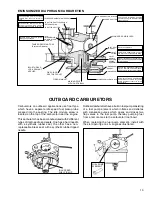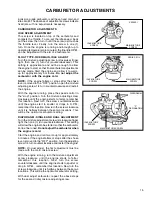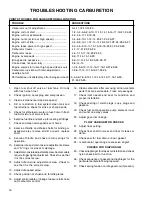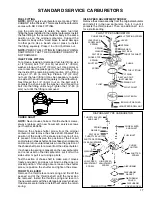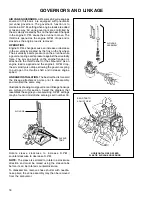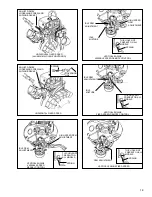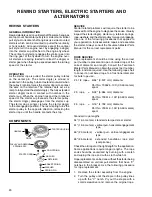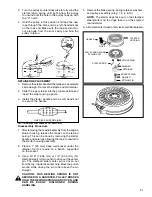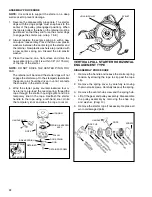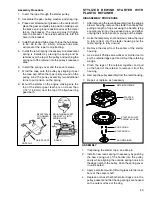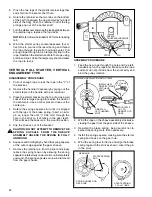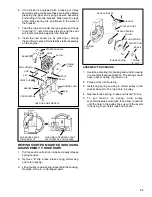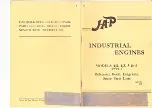
10
The float dampening spring on the HIGH TILT FLOAT
STYLE carburetor has an extended end which must
point toward the choke end of the carburetor.
cleaner and compressed air. With the choke plate and
shaft removed, blow compressed air through the high
speed air bleed located just behind the lower choke
shaft bearing and immediately in front of the venturi
to remove any dirt that may have accumulated.
Blow compressed air through all of the passages, making
sure they are free of dirt, varnish or foreign material.
DIAPHRAGMS.
Inspect diaphragms for cracks, tears
or brittleness. Replace if necessary. Rivet head on
diaphragm must always face toward the inlet needle
valve.
If the carburetor has an "F" designation on the casting,
it will identify the installation sequence of the gasket
and diaphragm on the carburetor. "F" designated
carburetors have the diaphragm installed first then the
gasket then the cover. If there is no designation, the
sequence is gasket, diaphragm and cover.
INLET NEEDLE AND SEAT.
(Diaphragm Carburetors)
POINTS TOWARD
CHOKE END
FLOAT DAMPENING
SPRING
PRIMER BULB.
To install, start the retainer and bulb
into the casting with the retainer tabs pointed out. Firmly
push the bulb and retainer into position using a 3/4"
(19mm) deep well socket.
CLEANING CARBURETOR BODY.
When removing
choke and throttle shafts, check shafts and bearings
in carburetor body for wear. Any looseness in these
areas can cause dirt to enter the engine resulting in
premature wear. If dust seals are present, they should
be positioned next to the carburetor body. Install the
dust seal, metal washer, and finally the return spring.
Welch plugs should be removed for proper cleaning
of the carburetor (See welch plug service at the beginning
of this section). When all accessories and shafts have
been removed, soak the carburetor in carburetor cleaner
for a maximum of 30 minutes. Blow out all passages
with compressed air in the opposite direction of normal
fuel flow.
The carburetor body on non-emission carburetors contains
a main nozzle tube pressed into the carburetor body
to a predetermined depth within the venturi of the
carburetor. DO NOT attempt to remove this main nozzle.
Any movement of this nozzle will seriously affect the
metering characteristics of the carburetor. (Emissions
carburetors have a serviceable plastic nozzle.)
Clean the well surrounding the main nozzle with carburetor
MAIN NOZZLE
DO NOT ATTEMPT TO REMOVE
GASKET
RIDGE AND
RIVET
HEAD UP
GASKET
RIDGE AND
RIVET HEAD UP
Summary of Contents for AH520 -
Page 67: ...64...

